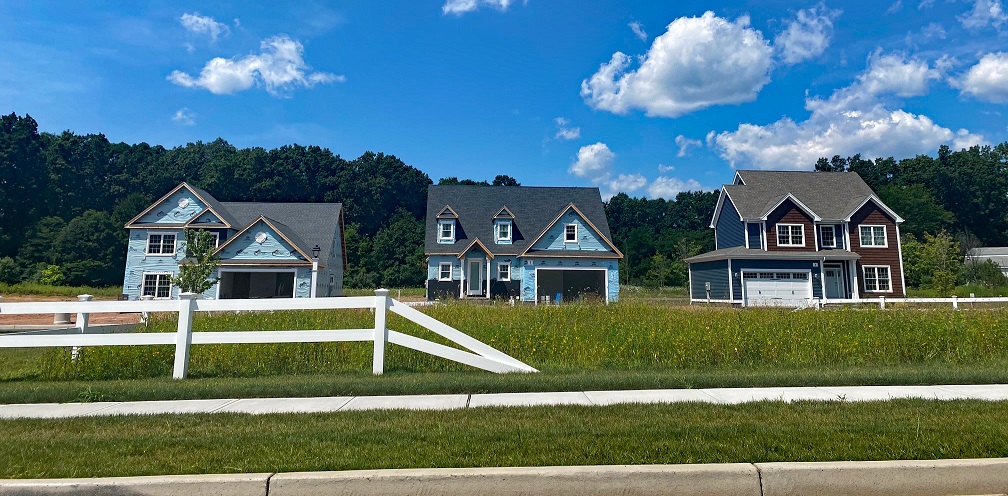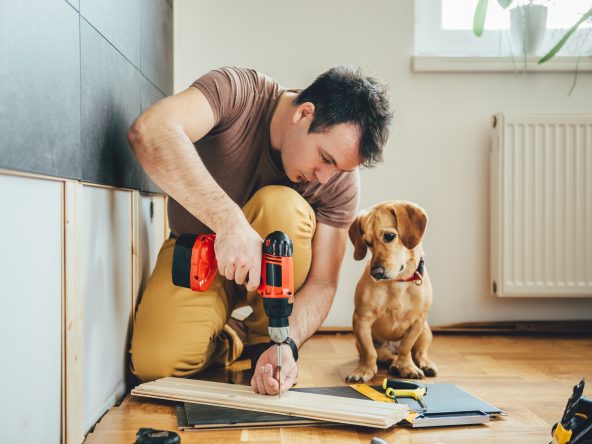Photo of Arbor Meadows in Cromwell
You Ask, We Answer: How Do I Budget for New Construction?
Whether you’ve started house hunting online or you’ve been slowly wading back into in-person open houses, chances are, your search for the perfect Connecticut home comes with a “wish list.” For many homebuyers today, having ample space to work (and learn) from home is figuring more prominently during COVID-19; for others, a kitchen with top of the line appliances or a laundry room on the second floor get top billing. While new construction can offer these features and so much more, many of those in the thick of their home search neglect to consider new construction because they think it will be cost-prohibitive. In our latest iteration of “You Ask, We Answer,” we examine how you can budget for new construction to make your dreams of new home ownership come true (hint: it’s not as daunting as you think!).
Budget for New Construction as You Would for Any Other House (Really!)
“You don’t need to do anything different than you would if you were buying resale,” says Joel Grossman, New Business Development Director and Realtor at Calcagni Real Estate. Just as you would plan on a 10% down payment with a resale home, you’d want to plan on the same amount for new construction, Grossman advises. That 10% down payment ensures the builder can start the building process on the house you’re buying. From excavating the foundation to purchasing materials to paying their contractors, builders put out 90% of the cost themselves until you close on the house; that 10% is their insurance that you’re going to show up at the closing table.
Let’s say—for the sake of this article—that your budget is $450k. You’ll share this budget with your Calcagni agent, along with that “wish list” we mentioned earlier. Your agent will show you subdivisions that meet your location and budget criteria, along with the styles of houses offered by the builder/developer in the given subdivision. You’ll see the lists of features and the spec sheets for each property—features such as hardwood or ceramic tile floors, stone countertops, central air, hi-efficiency heating system or on-demand water systems. These are all pretty standard among the builders with whom Calcagni partners. For the list price of $450k, your new construction home will have all of the features listed for the model you selected—meaning you can buy the home of your dreams without spending over your budget.
What If I Want to Personalize My New Construction Home?
The ability to personalize is one of the biggest benefits of buying new construction! But for many homebuyers, the thought of doing so conjures creeping costs and surprise fees that will far exceed their budget. Not so, Grossman assures us. “You can finance this,” he shares. “For every 10k on a 30-year mortgage, at today’s interest rates, it’s about a $50 per month payment.”
For example, Grossman says, if you want to personalize your owner’s suite with hardwood floors and the cost to do so is $1,000, the cost over a 30-year mortgage is $5 per month. Of course, you also have the option of paying for personalization out of pocket, but many homebuyers opt to roll such expenses into their mortgage.
“People have been personalizing like crazy!” Grossman shares. “Most of our builders are semi-custom to custom. Some single-family homes, like those built By Carrier, can be completely redesigned for a custom build. One homebuyer put a golf simulator in the basement—talk about personalization!”
Do Today’s Interest Rates Affect My Ability to Buy New Construction?
Certainly, not everyone is in a position to buy a home right now. But for those who are,” advises Grossman, “We want to strike while the iron is hot and take advantage of the current interest rates.” Many homebuyers are renters who are looking to make the investment in homeownership, but they’ll need a year to pull together a down payment. There is no guarantee that the interest rates will remain where they now, but it may be worthwhile to see what you qualify for so you have a target number to reach and can begin saving toward your down payment.
What Kind of Surprise Expenses Should I Expect with New Construction?
Surprise expenses are a real fear for new homes buyers, but Grossman assures us that new construction is not prone to financial sneak attacks. “A lot is done prior to construction,” he explains. “For those buyers who do want changes, you will sign off on additional costs before the builder begins working on them. You’ll be responsible for the price difference between what the builder included in the original package and the items or changes you want in your home—but you’ll always know what that amount is ahead of time.” And to ensure there are no last-minute swaps for either the buyer or the builder, there will be a cutoff date where further changes are not permitted.
What’s This About “Quick Move-In” Homes? Do They Cost More?
“Quick move-in” homes like those listed on the Calcagni website are an attractive option for those homebuyers looking to move quickly and possibly save money. If your lease is coming up for renewal or you own a home that you need to sell before buying new construction, the average time frame for a new construction build is 6 months. You may need interim housing to help bridge the gap between moving out and moving in—an additional expense that may not be feasible for some buyers.
Quick move-in homes can be an attractive option because they’ll be ready much sooner; the permit process is already complete and the houses are being framed, shaving off precious weeks (or even months) and allowing you to realize your dream of owning a new construction home in the time frame that works for you. While these homes may not allow you the same level of personalization that a typical new construction build would, you may still have time to select countertops, tiles, paint colors—or other things on your dream home wish list!




